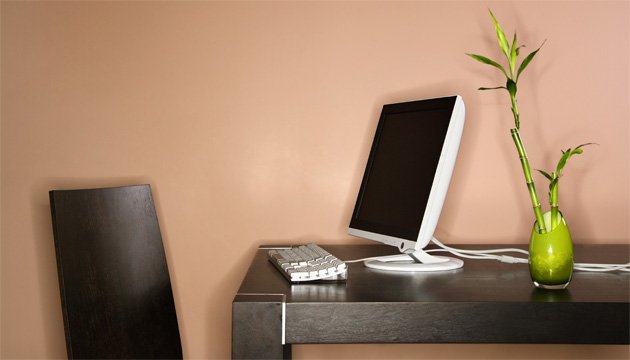
There’s definitely some truth to the saying “a cluttered desk is a sign of a cluttered mind.” However, clutter isn’t the only thing that can get in the way of being more productive. The key to producing better quality work in an efficient manner can be traced back to your environment as a whole. That means making sure that not only is your desk set up in a way that works for you, but also your actual office space and even your daily routine. To help you get more from your home office, try a few of these tips:
A Great Chair
If you’re working from home, chances are a good portion of your work involves sitting down at a desk. If you skimp on your chair, not only are you likely to suffer back pain, but you’re also limiting the time you can work comfortably. It’s difficult to get something done that requires a few hours of concentration if you are uncomfortable where you are sitting.
The comfort factor isn’t the only benefit of a great chair either. Good quality office chairs may cost a bit more, but they last considerably longer as well. Consider it a good investment, not only for the money, but for your body as well.
Everything Within Reach
A well designed office setup can literally shave time off of your day. It may not seem like that extra minute you spend to find something is costing you valuable productive time, but when you have to do it every time you want to start a new task, that time can add up.
Spend a day or two analyzing your work habits and patterns. Write down every time you had to get up to get something, or had to spend extra time looking for something. When you have enough data to recognize areas where you can improve, set out to restructure your office to fit your habits better. This is an area you can always be improving. Every few months, analyze your habits again and make adjustments.
No Distractions
This may seem like the most obvious tip here, however, it’s always surprising how many people don’t actually give themselves at least a few hours a day of completely uninterrupted time to get their best work done. if you think those few minute interruptions aren’t costing you – think again.
According to research from CubeSmart, Inc. the average office worker is interrupted seventy-three times every day. And, once there is an interruption, it takes 20 minutes to get back to the level of concentration that we were at prior to the disruption. If you want to do your best work, you really need to make sure you schedule in at least an hour or two each day where you can work without distractions.
90-Minute Work Intervals
More than fifty years ago, sleep researcher Nathan Kleitman discovered we go through 90-minute periods at night where we move through the five stages of sleep. He also discovered that our bodies go through a similar 90-minute pattern during the day as well. A 1993 study of young violinists helped confirm this research. The study found that best violinists practiced in the morning in three 90-minute intervals with breaks in between. Since then, this pattern has been discovered among other athletes, musicians, chess players and writers.
If we learn to work “with” our body’s natural tendencies, we can actually get more done in less time. Our body will give us signs that it needs a break. Instead of pushing through the signs of fatigue with artificial solutions, break down your work day into 90-minute cycles of work with breaks in between.
How do you get your best work done? Share your tips or your thoughts on the tips in this article in the comments section below!








